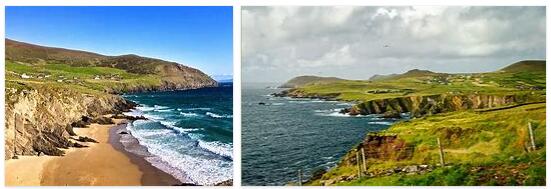
Kylemore Abbey
From the romantic love castle on the lake to the monastery
It all started with a great love story.
Kylemore Abbey in Connemara – one of the main attractions in the province
Many trips and study trips lead to the west of Ireland. Here the county of Galway is part of the Connacht province with breathtakingly beautiful nature. On the shores of Lake Pollacappul, Kylemore Abbey rises like a dream castle that can certainly serve as a dignified backdrop in fairy tale films.
It all started with the industrialist and politician Mitchell Henry, his newly wedded wife Margaret and their honeymoon in Connemera. Margaret had apparently fallen in love not only with her husband, but also with the Kylemore area, so she expressed a desire to live there all the time.
In any case, the Henrys visited Connemera again and again and when Henry’s old father had given his time, the couple could inherit a considerable amount. They immediately invested in the purchase of a handsome piece of land on the lake on Lough Pollacappul and in the construction of an imposing granite castle for their beloved wife. The Henrys had nine children when they moved into the 50-room castle in 1871. There they lived in harmony, happy and content at first.
When fate struck
The family went on a trip to Egypt in the fall of 1874, on which Henry’s wife fell ill with dysentery. Eventually she passed away at the early age of 45. Mitchell was deeply moved, had the deceased embalmed and the body brought to Kylemore Castle. There he built a mausoleum for her and a Gothic church as an eternal memory. He did not remarry.
The castle later changed hands twice along with the Victorian wall garden, first it was acquired by the Duke of Manchester and then by a London banker. In 1920 Kylemore Abbey became the property of the Ladies of Ypres, a former Belgian and subsequently Irish Benedictine order. The nuns had fled Belgium to Ireland, made Kylemore an abbey and at the same time founded a boarding school for girls.
From the fairytale castle to the Benedictine abbey
Kylemore Abbey had become a monastery. Today the large entrance hall and adjoining rooms are accessible to visitors, the other areas are inhabited by the nuns. There are free guided tours for visitors to the palace three times a day. To the west of the property, the large “Walled Garden” extends over more than 2.5 hectares, a beautiful Victorian walled garden. Its various themed gardens have been tended to by Kylemore Abbey since the founding years. Separate garden tours are also offered. The 4.5 hectare property also impresses visitors with its lush avenues. Forest nature trails and hiking trails offer the best opportunities for further activities.
Dingle Peninsula
Ireland’s Dingle Peninsula extends 30 miles into the Atlantic on the Wild Atlantic Way. It is around 9 km wide.
Breathtaking natural panorama
The peninsula is dominated by mountains that range from the Slieve Mish Range to Conor Pass and Mount Brandon, Ireland’s second highest peak. The magnificent coastline consists of sheer sea cliffs like Slea Head, dramatic headlands interrupted by sandy beaches, with the award-winning Inch Beach to the south and the Tomb of Maharees to the north. The Blasket Islands are to the west and the peninsula is dotted with beautiful villages, each with their own unique charm.
Sights and activities
Mount Brandon, the beautiful beaches, and the villages of Ballyferriter and Ballydavid are popular attractions. The peninsula has something for everyone: long and varied hiking trails, bike tours, golf courses, bridle paths and of course the diverse water activities such as kayaking, windsurfing, diving, rowing, sailing, fishing and swimming round off the holiday package. The Sea Head Drive offers breathtaking views. On the way, travelers can also marvel at the “Beehive Huts”, stone huts that resemble a beehive and probably date from the Iron Age.
Picturesque main town
Directly on the Atlantic coast, the charming town of Dingle awaits holidaymakers. This picturesque area, which is regularly teeming with visitors in the summer months and on weekends, is home to a variety of welcoming restaurants and pubs with live Irish music. Some pubs are also shops, so visitors can enjoy their Guinness between hats, horseshoes and rubber boots. Dingle has a long history as a travel destination, which makes it a cosmopolitan and creative place. In summer the hilly streets can be congested with visitors; at other times of the year, the picturesque little “capital” of the Dingle Peninsula belongs to its residents and a few travelers. Many travelers come to Dingle in the summer to watch a dolphin in the harbor.